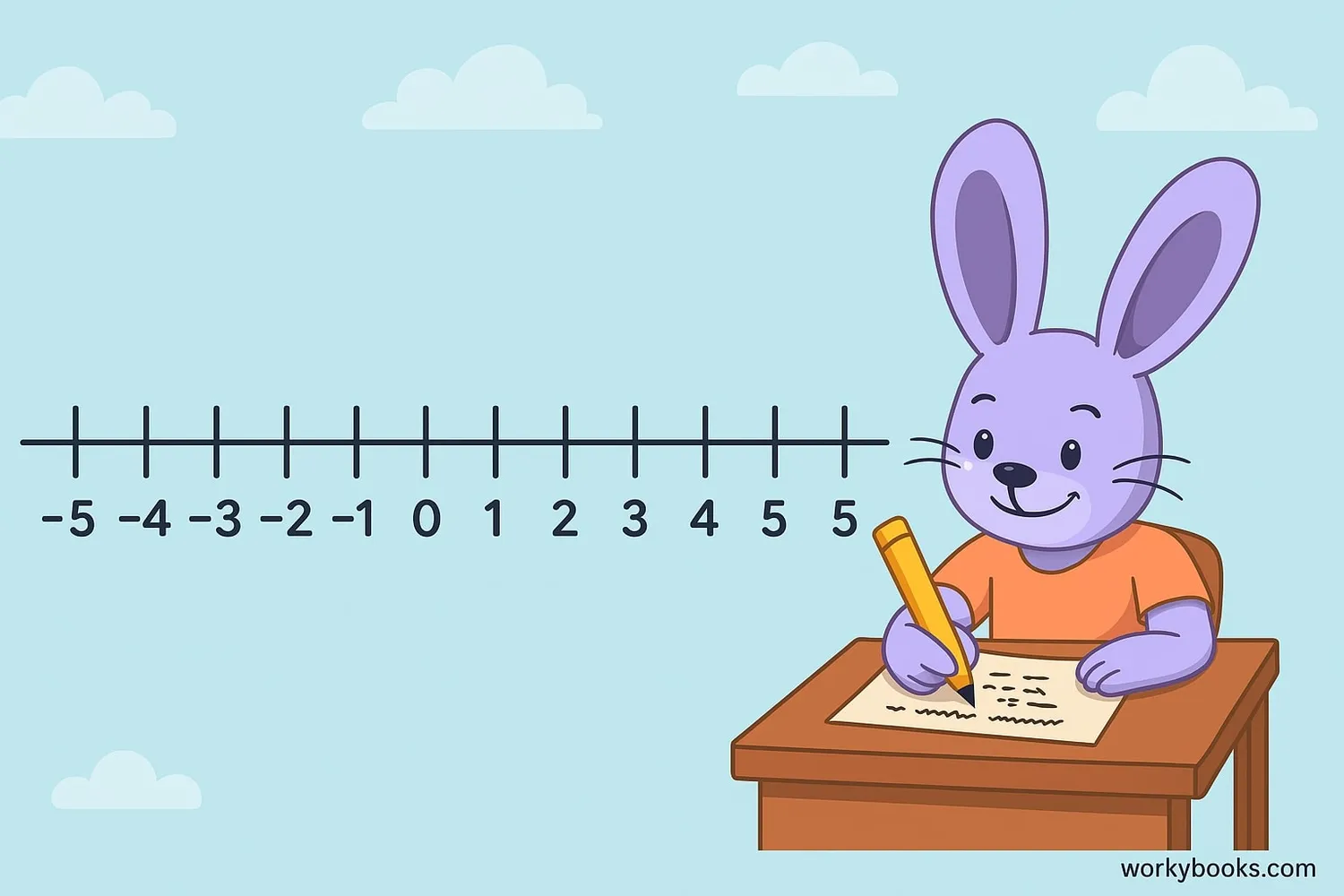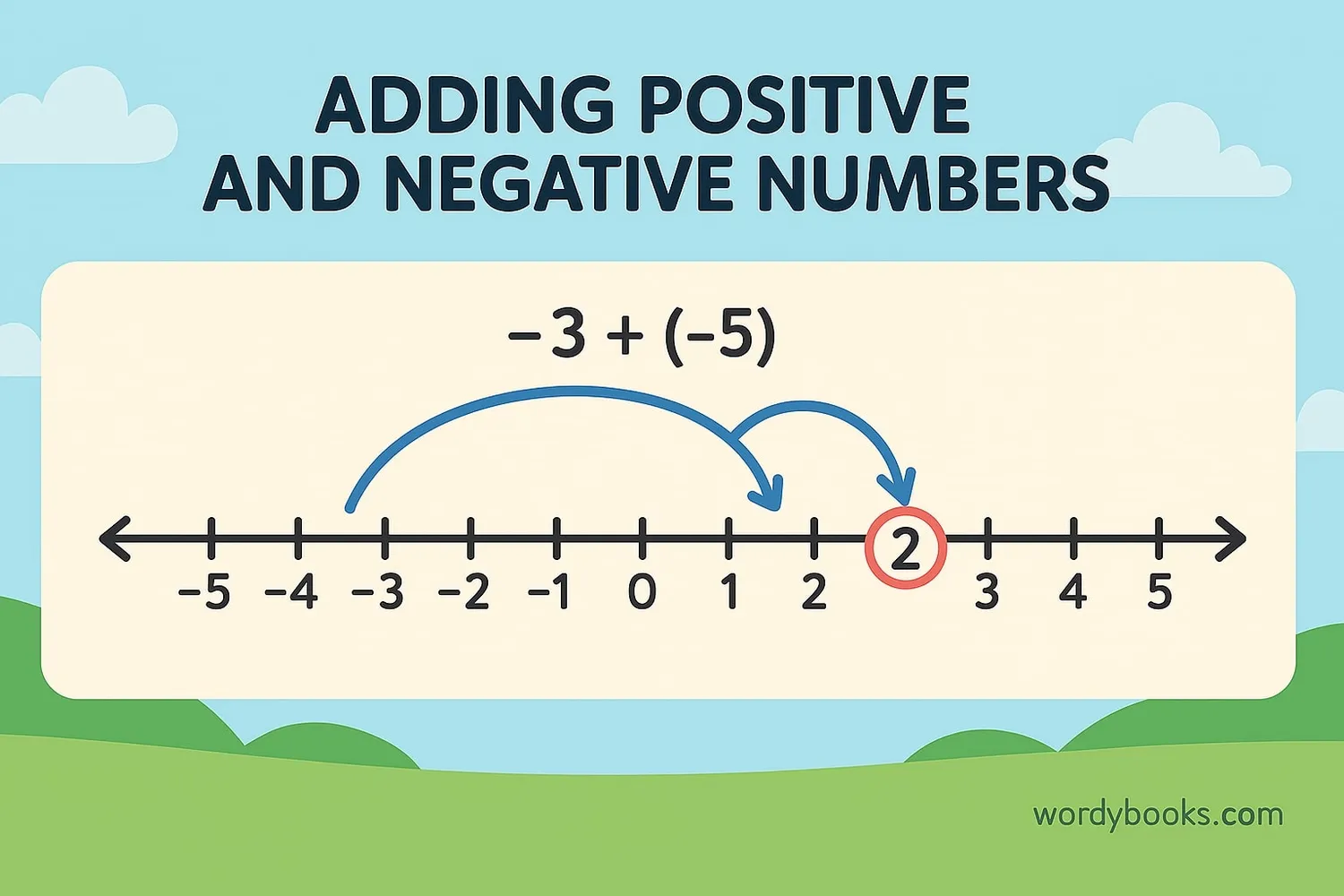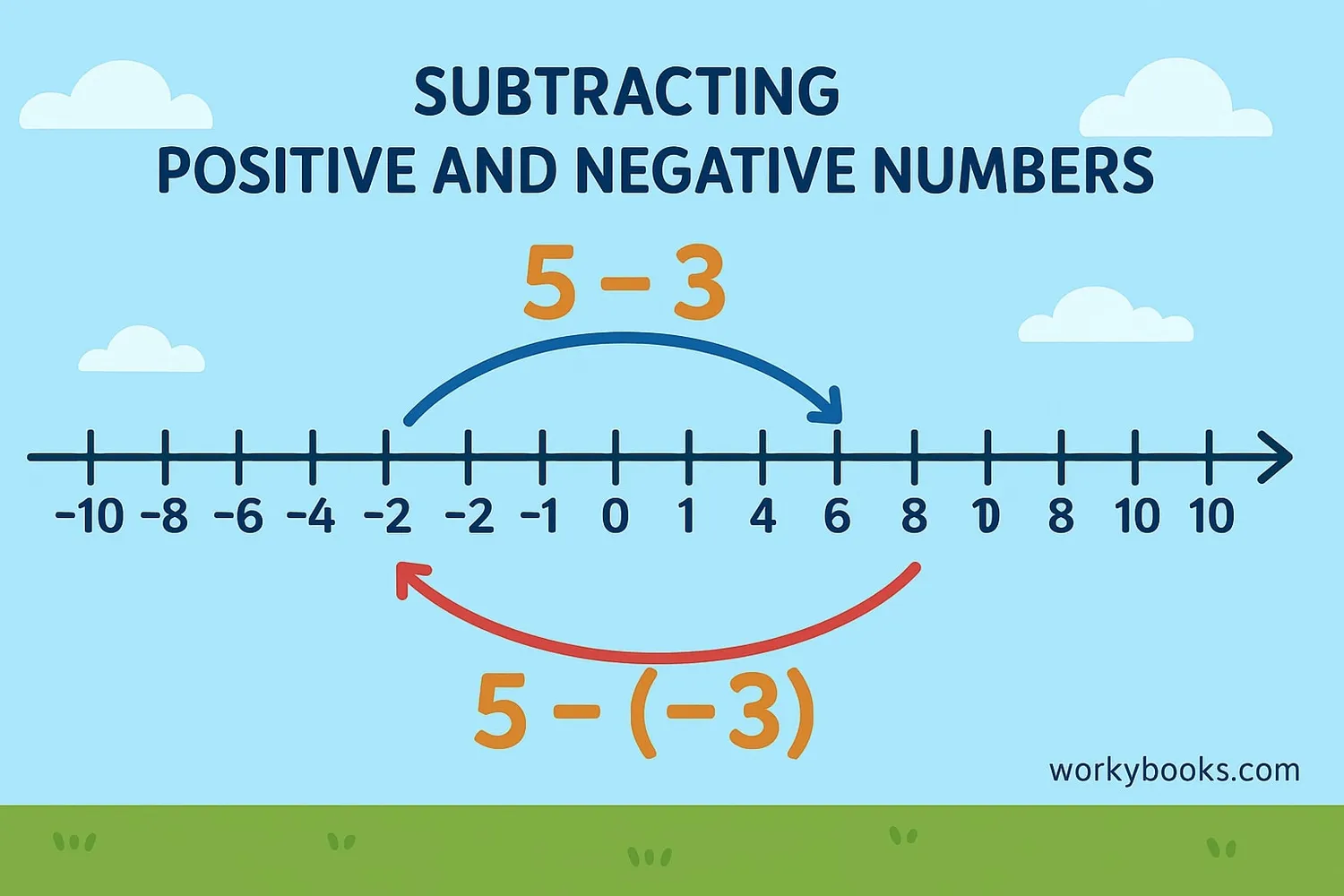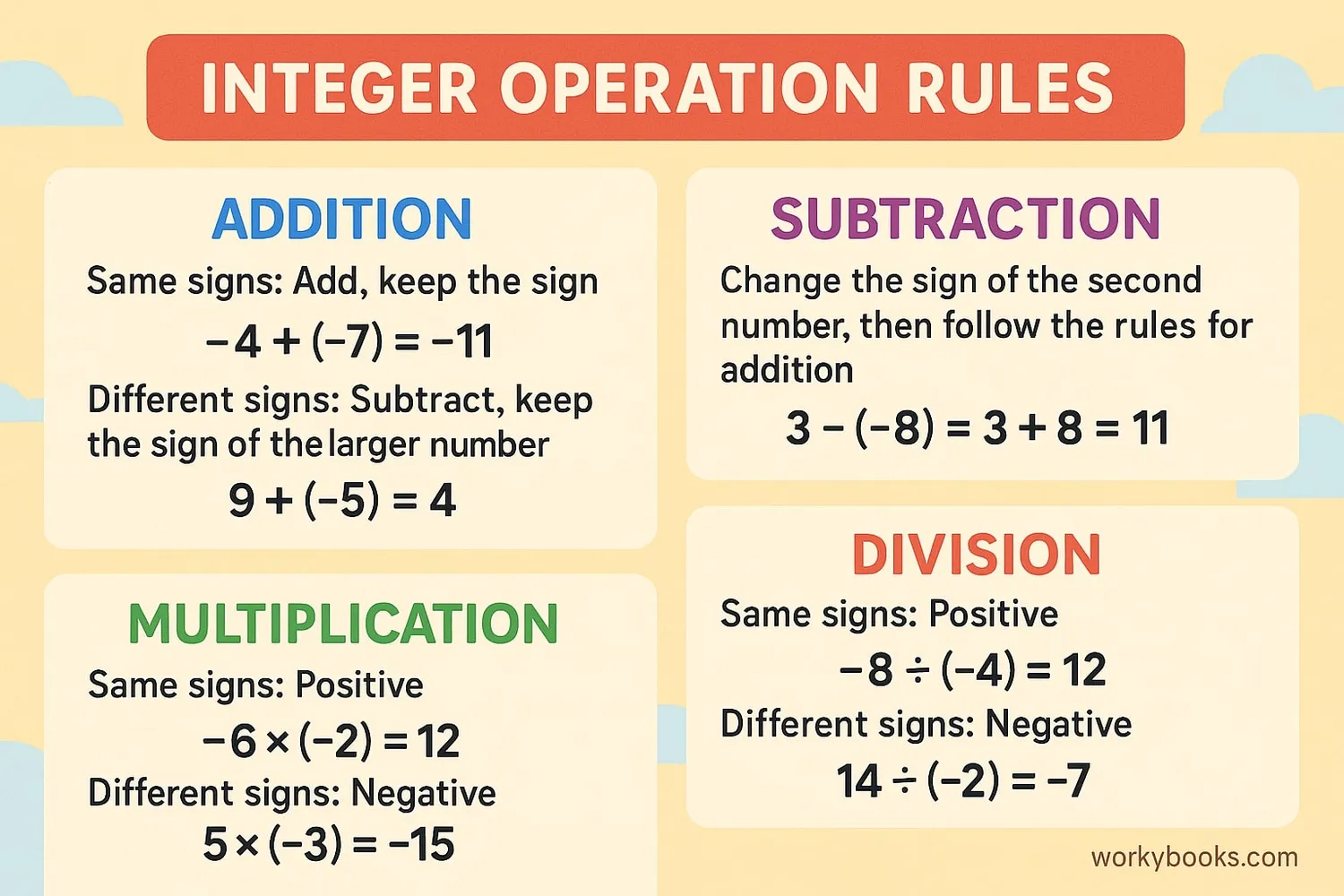Adding and Subtracting Integers - Definition, Examples, Quiz, FAQ, Trivia
Learn how to work with positive and negative numbers using clear explanations and number line examples
What are Integers?

Integers are whole numbers that can be positive, negative, or zero. They do not include fractions or decimals. Think of integers as steps on a staircase that goes both up and down from the ground floor (zero).
Positive integers are numbers greater than zero: 1, 2, 3, 4, ...
Negative integers are numbers less than zero: -1, -2, -3, -4, ...
Zero is neither positive nor negative.
Integers are used in everyday life to represent temperatures (above and below zero), elevations (above and below sea level), and financial transactions (deposits and withdrawals).
Key Concept
Integers include all positive whole numbers, their negative opposites, and zero.
Adding Integers

Adding integers is like combining steps on a number line. Here are the rules:
1. Same signs: Add the numbers and keep the sign
2. Different signs: Subtract the smaller number from the larger number and keep the sign of the larger number
Let's see some examples:
Positive + Positive
Add as normal and keep the positive sign:
Negative + Negative
Add as normal and keep the negative sign:
Positive + Negative
Subtract and keep the sign of the larger number:
Negative + Positive
Subtract and keep the sign of the larger number:
- Right for positive addends
- Left for negative addends
Subtracting Integers

Subtracting integers might seem tricky, but there's a simple rule: Subtracting is the same as adding the opposite.
Here's how it works:
Subtraction Rule
Change the subtraction sign to addition and change the sign of the number that follows
Positive - Positive
Subtract as normal:
Negative - Negative
Change to adding the opposite:
Positive - Negative
Change to adding the opposite:
Negative - Positive
Change to adding the opposite:
Rules and Examples

Let's summarize the rules for adding and subtracting integers:
Addition Rule
Same signs: Add and keep the sign
Different signs: Subtract and keep the sign of the larger number
Subtraction Rule
Change subtraction to addition of the opposite
Then follow addition rules
Real-World Examples
Example 1: Temperature change
If it's -5°C and the temperature rises 8 degrees, what's the new temperature?
Solution: -5 + 8 = 3°C
Example 2: Bank account balance
You have $50 in your account. You write a check for $70. What's your balance?
Solution: 50 - 70 = -$20 (you owe $20)
Example 3: Elevation changes
A submarine is at -120 feet. It rises 45 feet. What's its new depth?
Solution: -120 + 45 = -75 feet
Example 4: Football yardage
A team gains 5 yards, then loses 8 yards, then gains 12 yards. What's their total yardage?
Solution: 5 + (-8) + 12 = (5 - 8) + 12 = (-3) + 12 = 9 yards
Remember
When subtracting integers, remember: "Minus a minus is a plus!"
Integer Operations Quiz
Test your understanding of integer operations with this 5-question quiz. Choose the correct answer for each question.
Frequently Asked Questions
Here are answers to common questions about integers:
Math Trivia
Discover interesting facts about integers and mathematics:
Ancient Integers
The concept of negative numbers was first recognized in China around 200 BCE. Ancient Chinese mathematicians used red rods for positive numbers and black rods for negative numbers.
Below Zero
The lowest natural temperature ever recorded on Earth was -128.6°F (-89.2°C) at the Soviet Vostok Station in Antarctica on July 21, 1983.
Space Integers
In space, temperatures can vary dramatically. The side of the International Space Station facing the sun can reach 250°F (121°C), while the shaded side can drop to -250°F (-157°C).
Financial Integers
The concept of negative numbers is essential in finance. The word "credit" comes from Latin "credere" (to believe or trust), while "debit" comes from "debere" (to owe).





